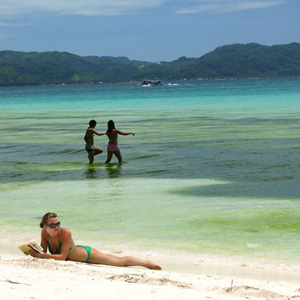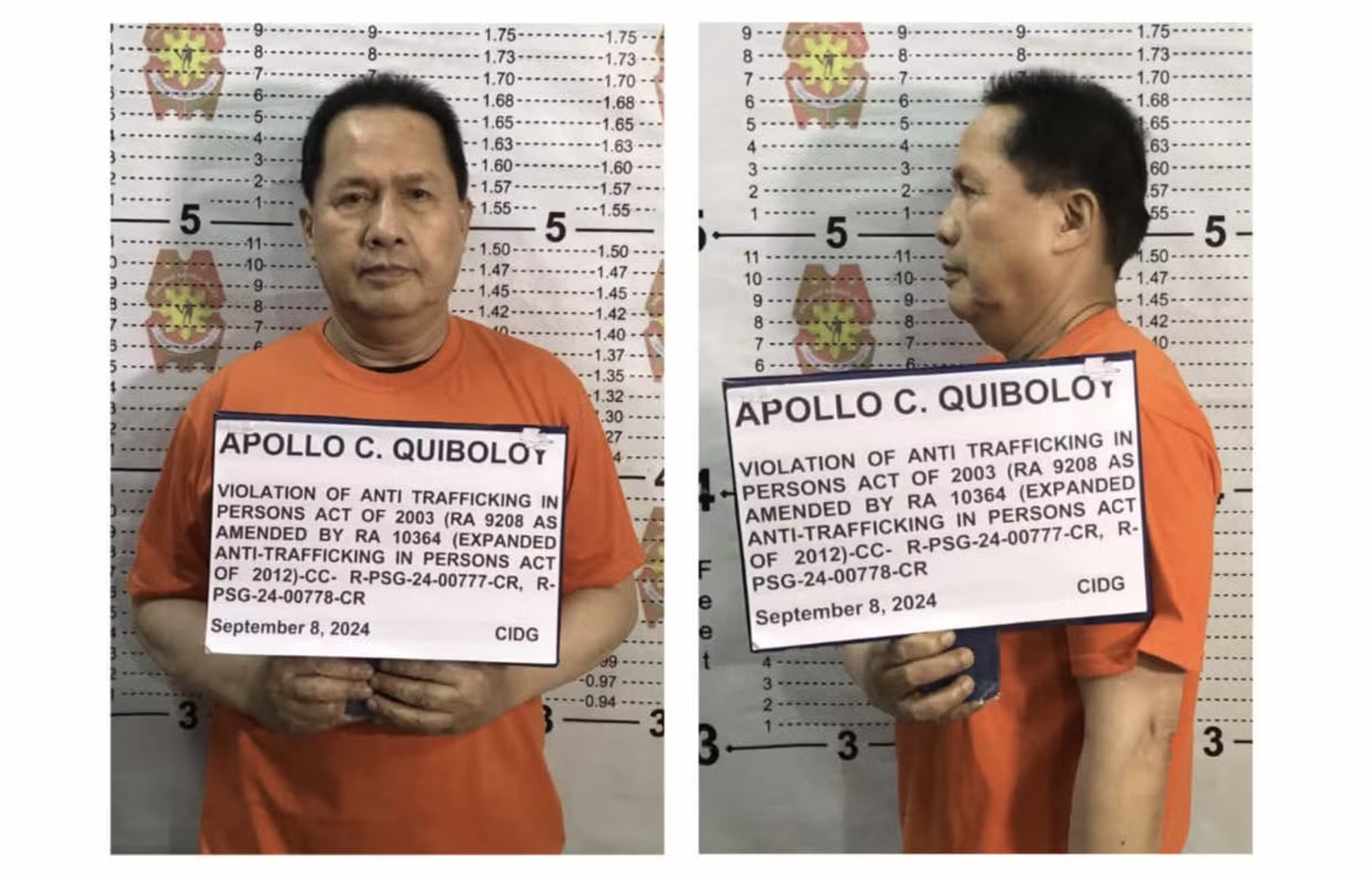
The journey is the destination, as most of us with the traveling feet and a tourist’s spirit often say. Every step of the journey—from our safe arrival, to the convenient access to our perfect accommodation, to the interesting attractions to explore and the fun activities to engage in—shapes the whole travel experience.
The Philippine Chamber of Commerce and Industry (PCCI) refer to these segments of the journey as the Five A’s or the five tourism-related areas: Arrival, Access, Accommodation, Attractions, and Activities. PCCI has collaborated with the government, as it has acknowledged that tourism continues to play an important role in the environmental, social, and economic development of the country.
Prior to the global recession, the Department of Tourism (DOT) projected that by 2010, there will be 5 million international arrivals that will contribute $17B or 30.6% of the country’s GDP (gross domestic product). Such projection may then translate into expenditures, from $0-8B to $2.5B, and create around 5 million jobs. However, given the current global economic challenges, most sectors agree that in reality, the employment figures will not reach 5 million, rather, it will just be between 3-4 million new jobs.
Even the World Travel and Tourism Council (WTTC) projected this decline in numbers, saying that this economic slump currently affecting highly developed countries will hit the Philippines hard for two years.
Whatever the projections may be, we are still talking about millions of new workers in the tourism industry, a workforce that has to be oriented on security, safety, and emergency preparedness before they commence work in the five segments of the journey.
Types of Tourism-Related Incidents
Perhaps the most fundamental matter to consider in securing the tourism industry from end to end, in a holistic manner, is to identify the major types of security incidents that have varying degrees of negative impact on the five A’s, on the tourists themselves, and on the tourism industry. These are crime-related incidents, terrorism, war, and civil-political unrest.
The fondness of our politicians and media to use the word “war” in fighting crimes, insurgency, rebellion, drug addiction, and even poverty is not helping our tourism marketing efforts at all. We are a country perceived to be at war. Real wars that have impact on tourism are cross-border wars, trans-border wars, attrition wars, and civil wars. The Philippines faces none of these. But short of being classified as civil war, political and civil unrest in the form of violent demonstrations, uprising, riots, and coup d’ etat or mutiny can subsequently cause global decline in tourist movements.
The closure of Thailand’s Suvarnabhumi International Airport by the “occupation force” of anti-government demonstrators, the brief takeover of the ATO Air Control Tower at NAIA by a disgruntled former government official, the violent dispersal of demonstrators during summit meetings of several nations, are examples of how such civil unrest can severely impact the local tourism industry of the affected country. In today’s real-time and rapid news broadcasting and connectivity, bad news travels faster than before, enough to make tourists cancel their trips or to shift to safer alternative destinations.

Mindanao has been associated with long-drawn internal war or low-intensity conflict due to the presence of separatist and communist revolutionary groups. The outbreak of wars, or the perception of such, tends to have a larger and longer negative effect on any tourism industry at the local area level. Even if the perceived war is limited to a given area, the impact can be felt at the global level of tourism activity. Southern Mindanao is a case in point when compared to its neighboring islands of Sabah, Malaysia and Sulawesi, Indonesia, which are considered safe havens for tourists.
Terrorism could be domestic, international, or cross-border in form. Terrorism is more aimed at targeting the economic dynamo of a country — the tourism industry. Consider the past attacks of the terrorist group Abu Sayyaf where they kidnapped foreign tourists in a deadly and gruesome manner. They went cross-border by grabbing guests of a dive resort at Sipadan, Malaysia and bringing them to Philippine territory.
Terrorism targets tourism because they aim to harm tourists—Westerners they consider as enemies of their religious wars. Furthermore, tourist destinations are soft targets. Populated mostly by foreigners (assumed as Americans and US allies), these are areas where any terror attack draws short-lasting but high-impact media coverage. We have seen terror attacks at hotels and resorts in Morocco, Egypt, Syria, Pakistan, and India. What comes to mind when Bali, Indonesia is mentioned? Not the beautiful beaches, but the bombings that killed hundreds of Westerners, mostly Australians.
However, crime-related incidents in the form of tourism-related security incident have a constant and widespread scope of impact. These are the incidents that can happen across all five A’s. Crimes can take various modes of operation and execution in different scenarios. A local victimizes a tourist, a tourist against another tourist, a tourist against a local, or an organized crime group against a business enterprise.
Theft is the most common yet least publicized among crimes. Robbery, rape, physical injury, homicide, piracy, and kidnapping are crimes that figure prominently not only in national and local newspapers, but also in the Internet — online versions and blogs — accessible to tourists all over the world. What’s ironic though is that tourists would rather charge to experience the crime incident that they were involved in rather than report them to the police.
The Journey is End to End
How do we mitigate the impact of negative news on our tourism initiatives and marketing efforts? Hard times call for hard decisions, which are, most of the time, knee-jerk reactions. Usually, one of the first cost-cutting measures is to reduce security expense. Cost-efficient security measures usually have an immediate effect on the investments on, and maintenance of, security and safety programs and systems.
The journey starts with the selection of the places to visit. The marketing effort is measured by how many tourists choose to visit a particular place. For a country with no world-renowned landmark to associate itself with, the Philippines attempts to grab the potential tourist from the point of decision making by showcasing in various media our attractions and the activities and accommodation facilities we offer. Such marketing efforts, however, considering the low advertising budget, are negated when tourism-related security incidents are getting more global news airtime than the few seconds of the WOW Philippines advertisement.
Arrival
Before tourists reach the Arrival area, they need to access airlines or travel operators for trip details. The integrity of the booking process is one thing to consider at this age of scams, identity theft, bogus websites, and organized crime groups. Though airlines and hotels can assure higher level of guests’ data protection, weak links like unscrupulous travel agents still exist. The sad part is, there seems to be no active effort to monitor anomalous booking activities.
At the Arrival stage of the journey, things get physically real for the tourist setting foot on Philippine soil. Investment in the Arrival areas should cover safety and security of budget air transports, sea vessels, travel agencies, tour operations, and of course, land transportation such as buses, shuttle vans, taxis, tricycles, etc.
Since we are prone to natural disasters and man-made calamities, there should be conscious, active, and systemic efforts to ensure the worthiness of our land, sea, and air transports. In relation to this, responding to emergencies is not solely the task of the government but of the private sector as well.
When asked about the emergency response trainings in relation to DOT Memo Circular 2006-09, Secretary Joseph Durano said the DOT has partnered with the Armed Forces of the Philippines on this matter. However, Armed Forces of the Philippines (AFP) Chief of Staff, Gen. Alexander Yano, in an interview, without directly denying such partnership with DOT, stressed that the AFP is going to respond to any disaster situation (in the context of natural disasters and man-made calamities). The statements of the DOT Secretary and AFP Chief show their conflicting takes on emergency response. Hence, the private sector, as the prime stakeholders, must take a more active role in emergency preparedness and response.
Access
There are more safety and security challenges in the area of Access. Our provincial roads are not well paved, poorly maintained, and littered with both trash and pedestrians. Aside from being narrow, our roads were built for cars alone. There are no sidewalks for the public to use. The sight of pedestrians walking along carriageways close to the passing vehicles is very common.
The Access areas are the spokes that connect Arrival, Accommodation, Attractions, and Activities to each other. Access is the weakest link in the journey due to several factors — political, cultural, and social. For example, during the summer fiesta season, temporary and makeshift roadblocks set up by fundraising barangay groups pose road hazards. The absence of proper “road checkpoint” signage and uniformed “collectors” presents a perfect ruse for roadside robberies. In addition, missing road directional signs can lead to some tourism-related security concerns, too. During election season, tourists witness campaign materials nailed, plastered, and littered everywhere. Not to mention the increased number of murder cases attributed to the elections.
We see street children begging for food and money in the middle of our main public streets. We also see street vendors plying their wares at intersections. We also see traffic policemen arresting jaywalkers.
Accommodation
The strongest link is in the area of Accommodation where there is a semblance of organized safety and security effort. The Association of Hotel Security Officers in the Philippines or AHSOP, organized in 1974, has the advantage of sharing real-time information on security issues and best practices, and all the benefits of networked security officers.
However, membership to this security organization is somehow limited, participated only by 4- or 5-star hotels in Makati, Ortigas, and the Manila Bay areas. The newly organized Cebu Chapter is inching its way to more members in the province. On the other hand, PCCI is encouraging investments on event and breakfast ventures and other support businesses like convenience stores, laundry shops, decent cafeterias, and even the growing number of hoteliers and culinary schools. These establishments should have the security and safety mindset of the big hotels, which can afford their own dedicated security officers. They should also have their own emergency preparedness program at hand should situations call for it.
Attractions and Activities
The jurisdiction of security officers (if there is one) in the Accommodation segment of the journey does not cover the areas beyond their perimeter walls. This makes the area of Attraction attractive to criminals. Our public beaches and shorelines are left to occasional security and safety care of local volunteers, tanods, or local security guards (if there are). Our mountain ranges are deforested, and if not, populated by insurgents or bandit groups. The mining industry, where revenues are not actually flowing in to the country, is competing with eco and medical tourism initiatives in terms of real estate and the environment itself. DOT Memo Circular 2006-09 does not cover retirement villages, medical tourism centers, historical sites, festivals and events sites, and theme parks.
Most of the historical and natural attractions are within public domain or government administration. Our historical sites are prone to vandalism not because they are under the care of public safety officials (read: police) but due to lack of law enforcement and the temptation of the adjacent commercial establishments.
New dimensions to consider under tourist attractions and activities are medical, ecological, and agro-tourism programs. This means new forms of risks, threats, and vulnerabilities to different profiles of tourists. Tourist safety should be paramount. It must be the foremost concern of the organizers of our tours, sports, and outdoor activities.
Current Initiatives
The Tourism Bill of 2008 (SB2213), which hopefully will be signed into law soon, is expected to provide the much-needed revamp of national tourism. Section 79, or the Peace and Order section of said bill, mandates the creation of the Tourism Security Force (TSF). However, apprehensions and concerns of some groups on how effective the TSF will be are valid. How will the TSF cover all the five A’s? Imagine the international airport terminals that are overpopulated as they are by “security forces” in different uniforms and forms. Should the TSF be there also? Not yet, but that can be done. Since they will be indoctrinated on cultural sensitivity, languages, and relevant laws, they are expected to perform their jobs better than their erstwhile anti-pimping and prostitution orientation.
Moreover, the TSF is to operate within the jurisdiction of the Tourist Enterprise Zone Authority or TEZA. It is clear that not all the five A’s will be under the TEZA jurisdiction due to geographic clustering or territorial constraints.
We have heard of the Tourist Oriented Police Community Oriented Police or TOPCOP in areas of Lagawe, Ifugao and Caraga region, and the Task Force Tourists Patrol in Intramuros, Malate, and Rizal Park. In one Mindanao province, they have this Security of Tourist Operation Program or STOP. The goal of STOP is to spread security awareness and address tourist security issues. The downside of employing local special security measures is that they are limited and operate only within the declared tourism infrastructure.
DOT Memo Circular 2006-09, issued on August 23, 2006, intends to create a mindset of security and safety awareness, and emergency response preparedness among DOT-accredited accommodation facilities. Doubts were raised if this memo is strictly followed to the letter. AHSOP and DOT would be able to conduct only two Security, Safety and Emergency Response Seminar Workshops while it is supposedly an annual activity.

What is End-toEnd Holistic Approach?
Much of the teeth in any law lies in Implementing Rules and Regulations or IRR. At this stage, the misinterpretation of security as equivalent to peace and order can still be corrected and consequently, even strengthen the relationship between private and public security forces. Obviously, the jurisdiction of the TEZA and its TSF cannot cover all the PICC-led initiatives across all five A’s of the journey, especially the Access segment which is the line that connects TEZAs. As often said, security is only as strong as its weakest link.
Assessment of Risks, Threat, and Vulnerabilities of all five A’s
To get the real picture of the prevailing situation, assessment should first be done to determine the various risks and threats that the five A’s are facing. The assessment can be conducted by a credible entity with more than basic understanding and background in both security risk management and tourism industry or, by a committee of representatives from the private stakeholders including the DOT, DILG, and DND. The assessment report can be done parallel to the determination of TEZA’s geographical jurisdiction, which will also involve the same stakeholders.
The assessment will definitely take considerable time to complete considering the scope of areas to cover, the number of arrival areas, access routes, accommodation facilities, tourist attractions and activities to visit, and the various stakeholders to interview.
The assessment report could also be one of the reference materials for the drafting of the IRR and even in the determination of area of responsibility of the TEZAs. Funding for the conduct of the assessment may be drawn from the seed capital as provided by the Tourism Act.
Application of Remedial Measures
Assessment reports are always done with a list of recommended measures to address all matters considered as risks, threats, strengths, and vulnerabilities.
Recommended remedial measures to address the findings of the assessment report should be deliberated upon by the contracting party prior to acceptance and application of each recommendation. The application of the recommended actions can be enforced by including compliance with these measures in the accreditation process.
Accreditation System for All Stakeholders of the Five A’s
There is an urgent need to revamp most, if not all, of the DOT accreditation requirements of the different private stakeholders of the industry. The requirements for the accreditation of hotels, tourist inns, apartelles, resorts, pension houses, and other accommodation establishments are irrelevant to the current business and security environment. The provisions are mostly motherhood statements that allow gray areas for non-compliance.
For example, the security requirement for accreditation of hotels is to provide security guards on a 24-hour basis at all entrances and exits of the premises while tourism-related establishments are only asked to maintain adequate security. The definition of adequate security is perceptive enough that it differs depending on who is spending for security or who is the victim of security incidents. Noticeably, accreditation of travel and tour services requires no security item at all.
The essence of accreditation is to raise the bar and let stakeholders reach certain standards. Standards then should be based on the recommended and approved remedial measures provided by the assessment report.
The value of accreditation is even recognized by the tourism bill, since it includes the accreditation process for the awarding of franchises to transportation service providers. The accreditation criteria should go beyond the physical security requirement. It should consider the wise employment of security and safety policies, procedures, and systems. To ensure participation in best practices and compliance with safety and security regulations, it is necessary to update and upgrade the accreditation process and requirements set by the DOT.
Assimilation of Security, Safety and Emergency Response Programs
Understanding the nature of the security and safety challenges of the tourism industry starts with looking at documented and well-researched fact and figures. A central body should collect, process, and analyze pertinent information in order to learn lessons for future prevention, mitigation, or avoidance of negative impacts.

Safety and security incidents are expected to occur regardless of the counter or preventive measures employed by both the government and the private sector. The issue now is how the public and private partnership and stakeholders will respond to calamities arising from man’s activities, and natural incidents which are impossible to completely prevent.
The government defines emergency in a grander scale than the private sector. Hotels, for example, consider a serious injury to a guest or staff as an emergency. Not all tourist establishments are ready to manage such incidents while the government sector does not even get involved at all. When incidents are caused by the impact of widespread fires, floods, storms, and other calamities or disasters, natural or otherwise, the private sector can only do what its resources and management system can handle while the government sector assumes the key role.
It is imperative then that the DOT and other concerned government agencies work closely and regularly with the private sector. In the same manner, the national police and other law enforcement agencies must continue to make headway in their partnership. It is high time that such partnership in security, safety and emergency response is institutionalized, instead of the usual monthly socials, speeches, and annual scripted drills.
Closer coordination, cooperation, and working relationships may include the active participation in crisis management planning in order to mitigate the negative effects on the local community, the tourism industry, the national economy, and to the tourists themselves.
The private tourism enterprise carries the major responsibility in mitigating and preventing safety and security incidents in their jurisdictions while the government sector, national and local, takes responsibility for the other tourist destination areas. However, different dynamics will come to play within the TEZA territories.
The recovery stage after a big or major safety and security incident is dependent on the mutual support of each stakeholder in the affected areas. Mutual support could be technical, financial, logistical, work force, or even moral support that criss-crosses various sectors and bypasses the bureaucratic processes.
Tourists should be educated about their own safety and security, about the hazards and other risks during their trips. One subtle way is by giving them simple and universally applicable tips on preventive measures and response procedures. This is where the big private stakeholders are strong because they have competent communications directors who manage the minute details of their press statements and marketing materials.
The role of the government in positively managing the media and the travel advisories (mostly from US, UK, and Australian embassies) should be focused on marketing a positive image to reduce apprehensions, panic, or even speculations. And if prior efforts are not sufficient, the government can handle quick recovery to normalcy. Does Mumbai conjure images of a love story or terrorism?
Resiliency of the tourism industry depends also on our management of emergency response and how we strengthen the security weak links in the investment areas. Once we have attained such level of credentials, then tourists would certainly enjoy and remember the experience of a safe arrival, easy access, perfect accommodation, interesting attractions, and dynamic activities. At the end of the day, the question is whether our tourists get terrified or fall in love with the Philippines.







One response to “Tourism Security: End to End”
Thanks for your grateful informations, am working in Tourism Portal, so it will be helpful for my works.